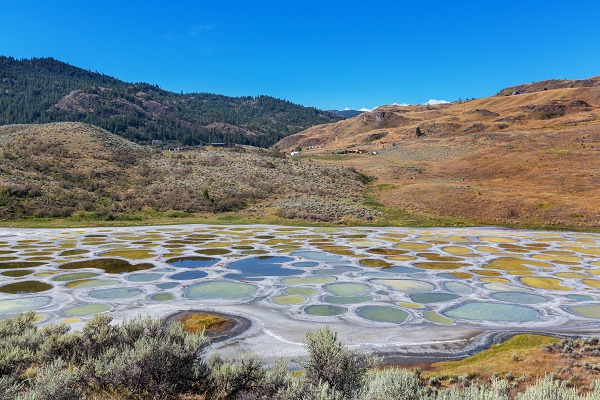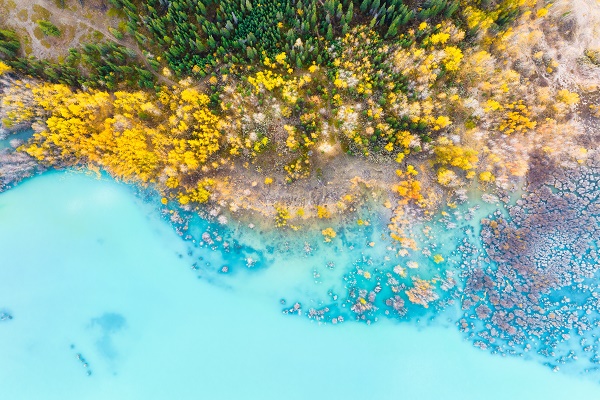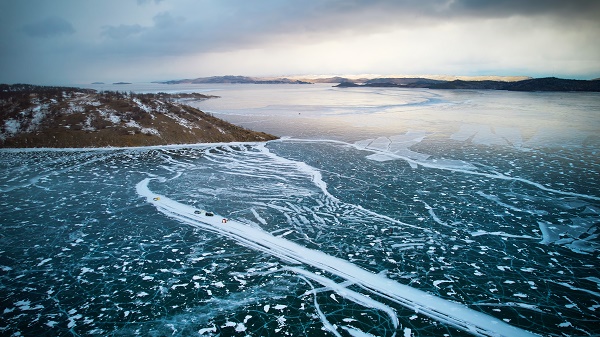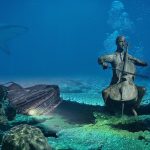This incredible planet features a plethora of breathtaking sites as well as a number of mysterious phenomena. A great example of both is lakes. Though there are lakes in almost every city in the world, not all of them are fascinating or mysterious enough to grab the attention of passersby. While there are those lakes that attract visitors with their perfect and beautiful sceneries, however in this article, we would like to shade the spotlight on the lakes that are so unique, you need to see them to believe their existence.
Spotted Lake, British Columbia, Canada
The Spotted Lake got its name for its unique appearance of crystalized spots of colourful mineral deposits all over the pools during the summer. It contains high levels of magnesium sulfate, calcium, sodium sulphate and 8 other minerals including silver and titanium.
This sacred lake is very important for the Syilx people, the First Nations of the Okanagan, for healing and relaxing their muscles. As one of the world’s highest concentrations of healing minerals like Epsom salts, calcium, and sodium sulphates are found in these pools.
Pink Lake Hillier, Australia
“Pink Lake” Hillier, one of the most popular lakes in Australia, may seem too pretty and cutesy, but its pink bubblegum colour is actually due to large amounts of halophilic bacteria, Dunaliella Salina.
These bacterias create a pinkish hue in the lake as they produce carotenoid pigments. Another reason could be the Archaea in the salt crusts of the lake. Despite these reasons, it is safe to swim in this lake. However, this is not the only colourful lake in the world.
Boiling Lake, Dominica
The reason behind the Boiling lakes’ existence is the continuous flux of steam or gas generated by an underlying magmatic intrusion that drives water up into the lake. This volcano-hydrothermal feature is located adjacent to the Valley of Desolation in southern Dominica.
The lake is approximately 60m in diameter and about 15m deep. The accurate heat levels of the lake’s centre cannot be measured as the water there is at a constant rolling boil. Although recently the water temperature has dropped comparatively, it is still not safe for people or animals as the temperature can shoot up without any warning.
Abraham Lake, Canada
As the first man-made lake, Abraham Lake is truly as unique as compared to all the other lakes in the world. Built on the upper course of Alberta’s North Saskatchewan River at the bottom of the Canadian Rockies during the creation of the Bighorn Dam.
This majestic lake boasts an attractive blue colour due to the rock flour from glaciers. And spread all over beneath the surface of this blue lake are ice bubbles—chunks of ice which are caused by the trapped methane. Though the lake is gorgeous in summer, during winter its beauty is incomparable.
Lake McKenzie, Australia
Do you know what makes Lake McKenzie so different and unique compared to the other lakes? The fact that it is a ‘perched’ lake plays a major role in that. This means that it only contains rainwater. There is no inflow of streams and no outflow into another source of water.
The sand and other organic matter at the bottom of this lake form an impervious layer which prevents the accumulated water from draining away. The clear blue colour of the lake is due to the natural water filter formed by the same materials.
Baikal Lake, Russia
Declared a UNESCO World Heritage Site in 1996, Baikal lake in Siberia, Russia, is the oldest and clearest freshwater lake on earth. The “cobweb-like flora and fauna” gives the lake a unique look among other lakes.
It is estimated to be 25 million years old and is also considered to be the deepest lake in the world. The Lake has three separate basins and the deepest one is 1,642 meters deep. It is encircled by a network of hiking paths called the Great Baikal Trail. During summer it is safe to swim here, however, the cold will eventually get to you as you go deeper.
Lake Natron, Tanzania
Calling Lake Natron Unique would be an understatement as its high levels of alkalinity, with a pH of 10.5, can burn the skin and eyes of animals that aren’t adapted to it.
Minerals including high concentrations of sodium carbonate that flow into the lake from the surrounding hills cause increased levels of pH.









